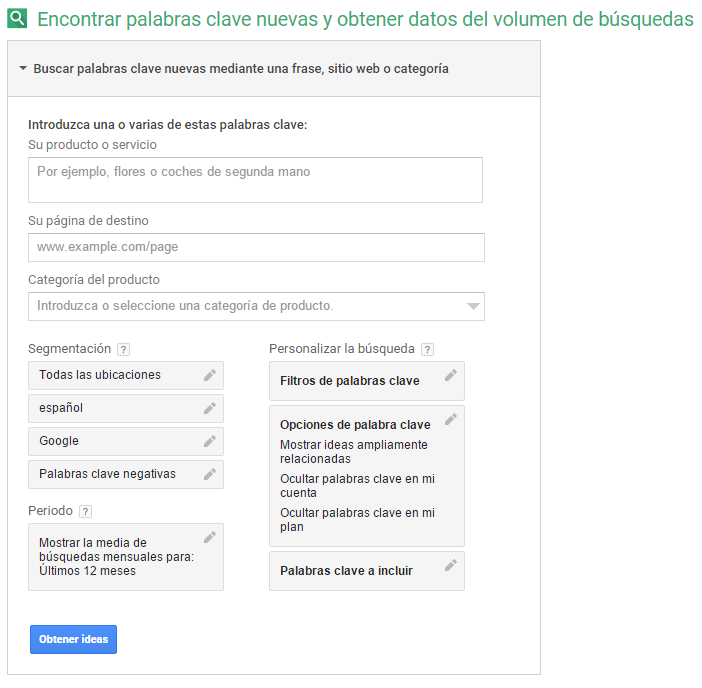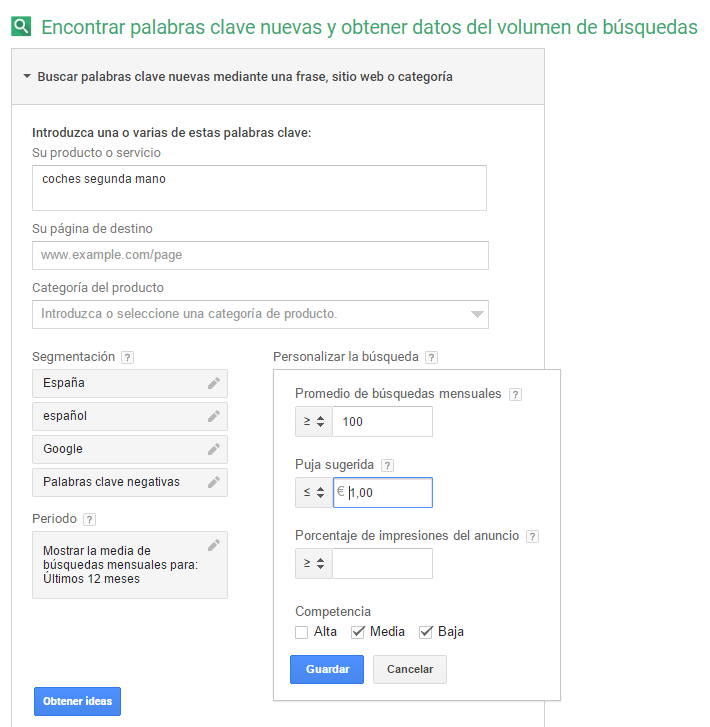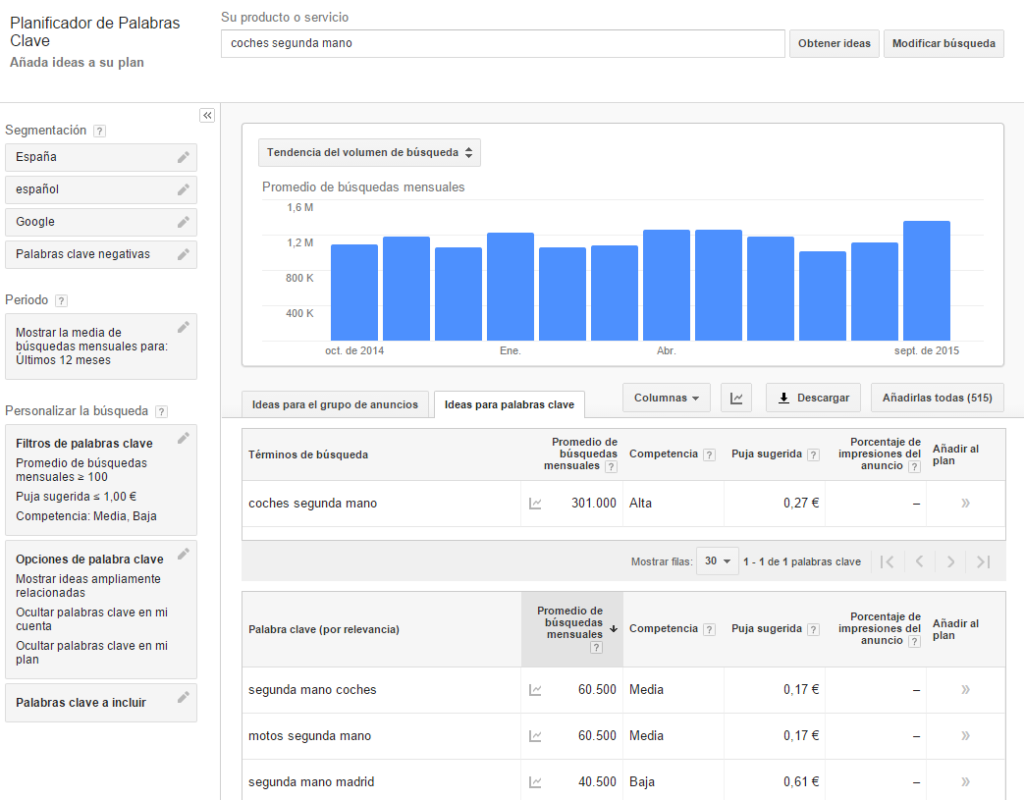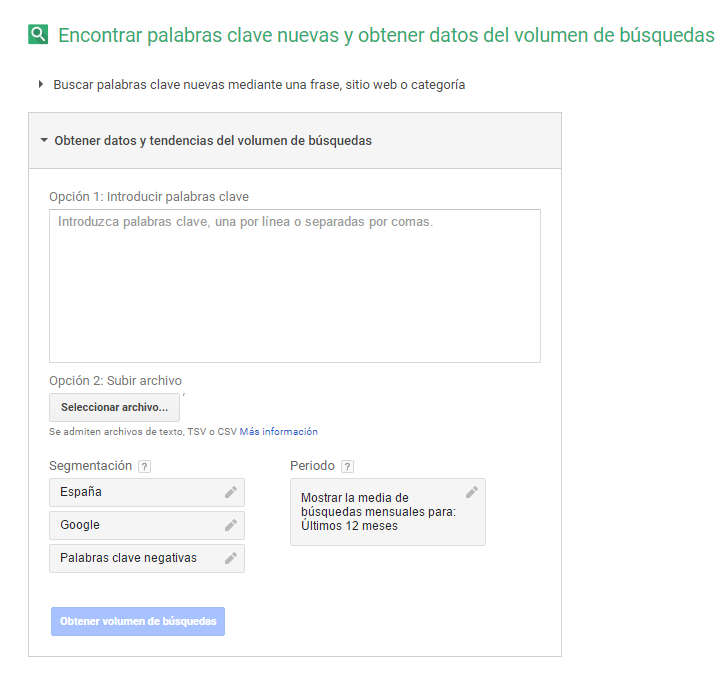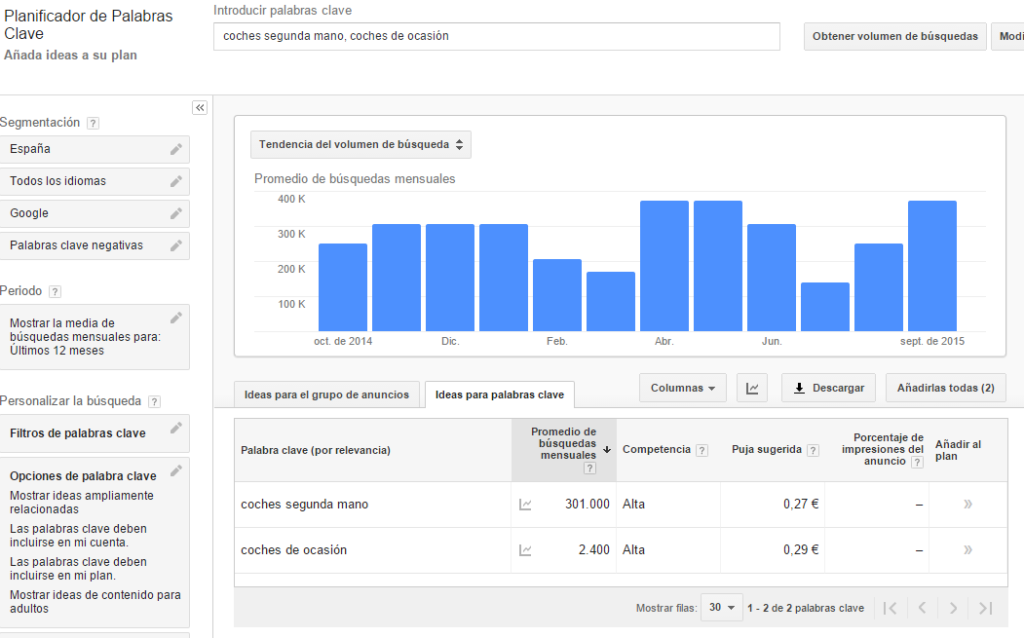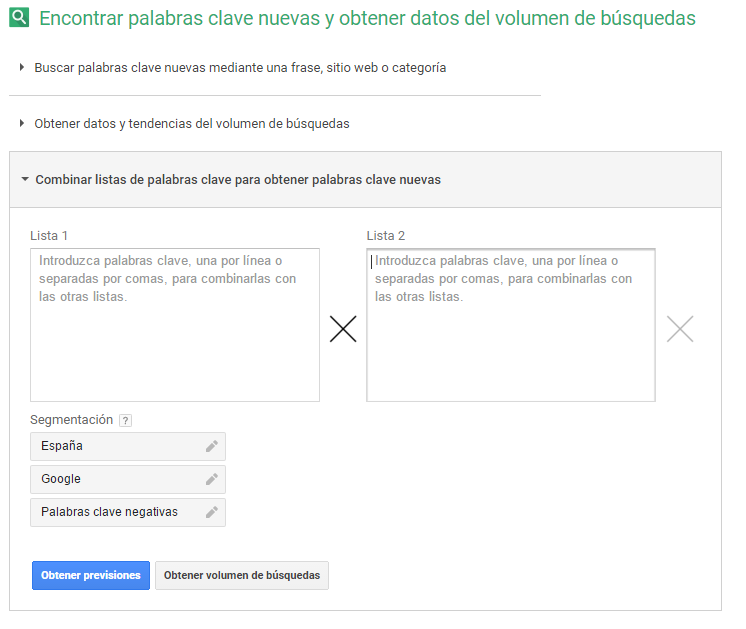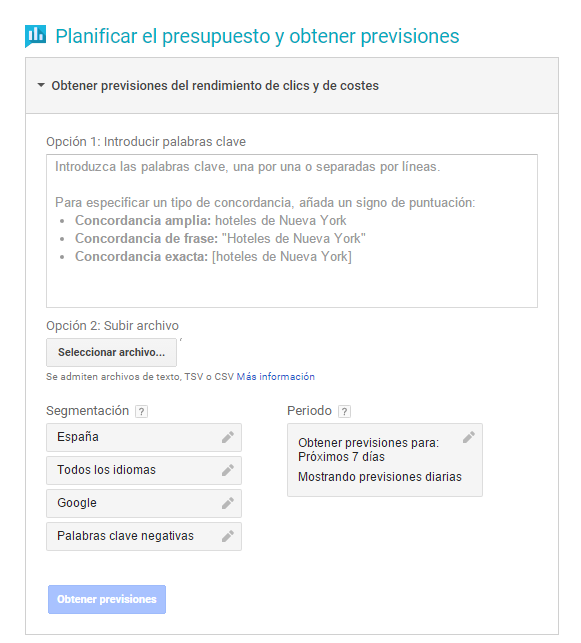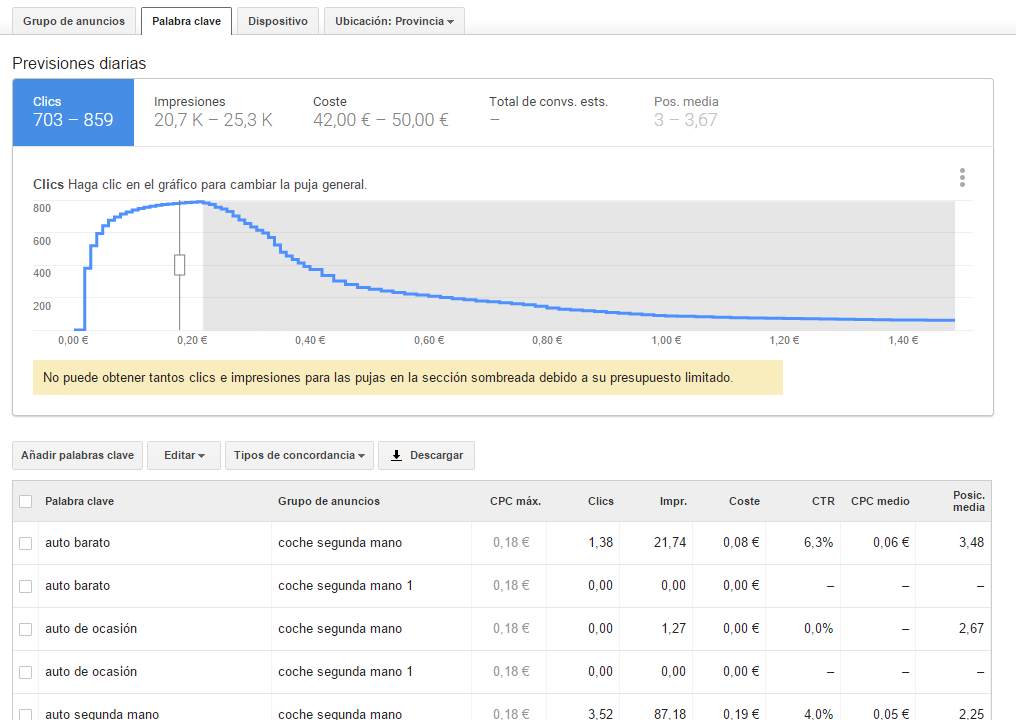Written by Juan Daniel Fuentes
Index
The keyword planner is a tool found within the Google AdWords (now Google Ads) advertising platform. This web application mainly provides information on how often a search is registered. It suggests similar keywords which allows us to detect search patterns (such as “hotel + city” in the hotel search, or “type of house + city” in the real estate search) as well as the comparison of traffic potential between two similar searches (for example, to know if “used cars” or “second hand cars” are more used).
We will now take a look at all the information it can provide us with.
To use the keyword planner you must be registered in Google AdWords.
Search for new keywords by phrase, website or category
The tool is based on the search for keywords from other words, a website or a category provided by Google. In the case of entering a web page, the utility obtains the keywords from the site content to display a report of related words.
It is very important to define the segmentation, since the results obtained depend on it.
The parameters to segment the search are:
- The location: it can be from a country to a province or city.
- Language: We can choose one or several languages.
- The platform: it can be only Google or also search partners.
- Negative keywords: allows us to select keywords that we want to avoid.
With the period we can define the period of time in which we want to perform the searches. The oldest date is two years ago and the most current date is the month prior to the current month.
With the keyword filters we will be able to segment the words by average monthly searches, suggested bid, percentage of ad impressions and competition, which will allow us to delimit very well what type of searches are the ones we want to show us.
The keyword options offer other, less relevant, but in some cases interesting settings. Showing only ideas directly related to the search terms, showing keywords in the account or showing adult content ideas are some of them.
Finally, the keywords to be included will list only the searches that contain the keywords we have defined.
Keep in mind that the reports are for a maximum of 801 searches, so the more we segment, the higher the quality of the listing and the fewer terms we will lose due to this limitation.
Below you can see the configuration to obtain searches related to the phrase “used cars”:
And in the following screenshot the result:
It shows a list of suggestions along with very interesting data such as:
- A trend graph where you can analyze the volume per month and if there is seasonality.
- Average monthly searches per keyword.
- Keyword competition.
- Suggested bidding by keyword.
In addition, the report can be downloaded in various formats, such as Excel, to perform the calculations we deem appropriate.
Obtain search volume data and trends
This is a version with fewer features than the previous one, but also very useful, as it allows us to compare the search terms we find interesting and observe their trend.
The most notable option that differentiates this utility from the previous one is the possibility of uploading a file with the terms to be compared. Below is a screenshot with a comparison of two terms:
Combining keyword lists to obtain new keywords
This is a very interesting utility that allows us to create keywords by making combinations of others.
There are two columns named “List 1” and “List 2”, in each one we add a list of words. Segmentation is very simple, and you can only indicate the location, whether to include search partners and add negative keywords.
The result of crossing the two lists will be shown in the budget planner that we will see next.
Budget planning and forecasting
The budget planner is one of the latest additions to this tool. Thanks to it we will have an estimate of the results that we can obtain by publishing campaigns with certain keywords.
By simply entering the keywords and basic segmentation data we obtain forecasts of clicks, impressions and other data, based on the maximum CPC and daily budget. This data will be displayed by ad groups, keywords, devices and location.
Sources
https://ads.google.com/intl/en/home/
https://support.google.com/google-ads/answer/7337243?visit_id=638245200595140125-1271885247&rd=1
